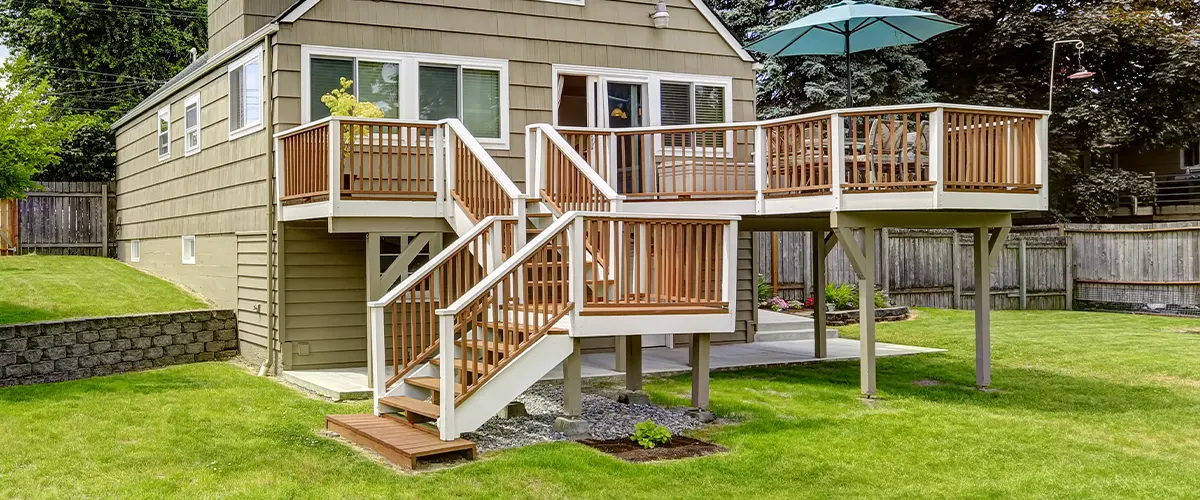Solid Foundations, Stunning Decks: The Ultimate Guide to Deck Footings
The Significance of Deck Footing: Key Considerations for a Steady Deck

Significance of Appropriate Deck Footing
The appropriate footing for a deck is vital for making certain security and durability. When developing a deck, it is vital to pay attention to the structure or ground upon which it will certainly be constructed. A well-designed and appropriately installed footing provides a solid base that sustains the weight of the deck and distributes it uniformly to the ground.
Among the essential reasons correct deck footing is necessary is to make sure stability. A deck that is not safely secured to a steady ground can sag or move in time, resulting in possible security threats and costly repair services. By giving a strong base, the footing helps to avoid these concerns, guaranteeing that the deck remains degree and safeguard.
Additionally, appropriate deck footing additionally adds to the long life of the structure. A secure footing aids to lessen activity and settling, which can cause tension on the deck's materials and cause early wear and tear. By establishing a solid foundation, the deck is much better able to hold up against the elements and maintain its architectural integrity with time.
Aspects Affecting Deck Security
Variables influencing deck stability include the soil structure, climate problems, and deck design. These elements play a crucial duty in identifying the general stability and longevity of a deck structure.
Sandy or fertile dirt might not offer enough support for a deck, while clay or rocky dirt can supply much better security. Carrying out a dirt analysis before building can help determine the viability of the dirt for the deck footing.
Climate conditions additionally affect deck stability (Deck Footings). Extreme climate condition such as high winds, hefty rainfall, and freezing temperatures can put considerable anxiety on a deck structure. Adequate support and proper style considerations, such as utilizing appropriate bolts and products, can help alleviate the impact of these weather and guarantee the deck remains secure with time
Deck layout is an additional critical variable affecting stability. The design must take into consideration the expected tons, the spacing and size of the footings, and the overall structural honesty. A deck that is not effectively developed can sag, change, or also collapse, compromising the safety and security of those utilizing the deck.
Picking the Right Ground Kind
When considering the stability of a deck, it is very important to carefully select the proper type of footing. The kind of footing you pick will certainly depend on different factors such as the dirt conditions, climate, and the dimension and design of your deck. The two primary kinds of grounds generally utilized for decks are concrete grounds and helical stack grounds.

Helical stack grounds are optimal for decks built on uneven or sloping surface, as they can be set up at different midsts to fit the ground problems. They are likewise a fantastic option for decks that require to be developed in locations with high water tables or on sensitive dirt types.
Correct Footing Installation Strategies
Correctly mounting the deck footing is essential for ensuring the security and long life of the deck structure. There are numerous essential strategies that should be followed to make sure a solid foundation. when it comes to setting up deck grounds.
Firstly, it is necessary to begin with a well-prepared site - Deck Footings. This includes getting rid of the area check my site of any type of plant life or debris and ensuring that the ground is degree. A degree site will assist prevent any type of irregular settling of the footings with time
Next, the footings need to be dug to the appropriate depth. The depth will depend upon elements such as the dirt type and regional building regulations. Normally, grounds should be dug listed below the frost line to avoid frost heave and make sure security.
After excavating the openings, it is essential to appropriately compact the soil at the base. This can be done making use of a hand tamper or a mechanical compactor. Condensing the dirt will certainly offer a firm base for the ground to remain on.
When the footings are in place, they ought to be full of concrete. The concrete ought to be combined according to the manufacturer's instructions and poured into the holes. It is essential to make sure that the concrete totally fills up the holes and is degree with the bordering ground.
Finally, the concrete must be enabled to cure for the recommended quantity of time prior to any type of weight or load is put on the deck. This will certainly make sure that the grounds have totally set and prepare to support the deck framework.
Routine Maintenance for Resilient Deck Stability
To ensure the resilient stability of a deck, it is vital to participate in regular upkeep practices that promote its structural honesty. Routine upkeep not only enhances the visual appeal of the deck yet also protects against potential safety and security risks. One important facet of deck upkeep is routine cleaning. Sweeping away debris, getting rid of leaves, and removing out dust and grime aids avoid dampness accumulation, which can bring about rot and decay. Furthermore, evaluating the deck for any type of indicators of damage, such as damaged or loose boards, rusty bolts, or compromised barriers, is essential. Quickly addressing these problems with fixing or replacement guarantees the architectural security of the deck. Another essential maintenance practice navigate to this site is sealing or discoloring the deck regularly. This assists secure the timber from the components, such as rain, sunlight, and snow, which can cause fading, warping, and splitting. Lastly, routine examination of the deck ground is critical. Ensuring that the grounds are secure and totally free from any type of indications of settlement or changing will certainly aid keep the total security of the deck. By continually applying these upkeep techniques, deck owners can ensure that their decks continue to be steady and secure for several years to find.
Final Thought
In verdict, proper deck footing is critical for maintaining a steady deck. Variables such as soil deck, kind, and climate load must be taken right into consideration when selecting the right footing type.
The value of deck footing can not be overemphasized, as it supplies the foundation upon which the whole deck structure is built. A deck that is not appropriately designed can droop, change, or also collapse, jeopardizing the safety and security of those making use of the deck.
The 2 main types of grounds frequently used for decks are concrete grounds and helical stack grounds.
By constantly applying these upkeep methods, deck owners can guarantee that their decks continue to be steady and secure for years to come.
In conclusion, proper deck footing is crucial for visit this site right here maintaining a secure deck.